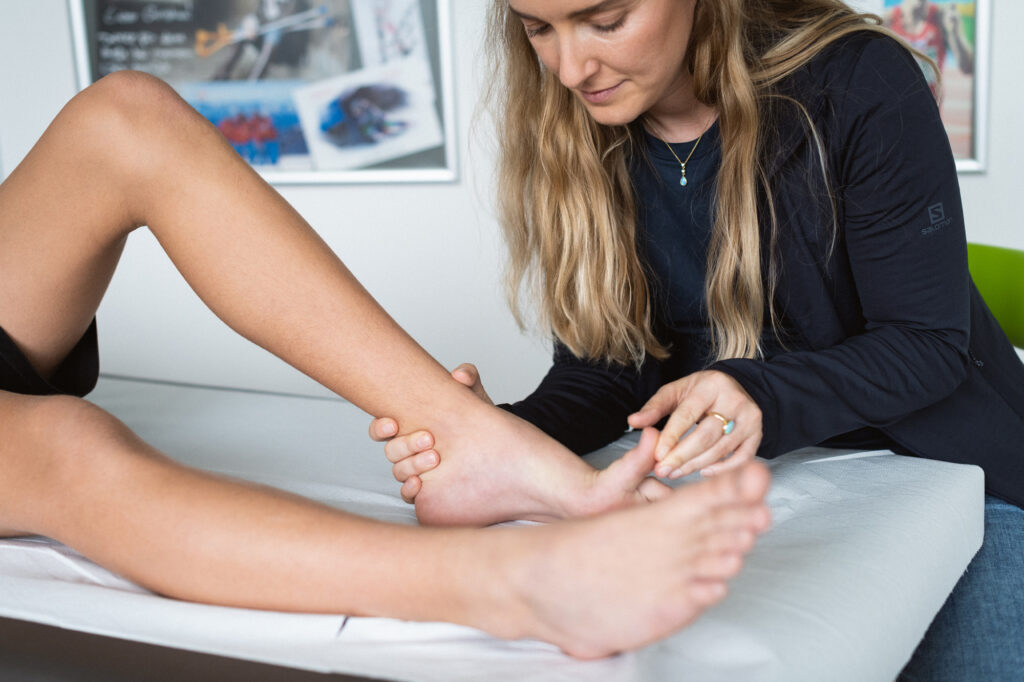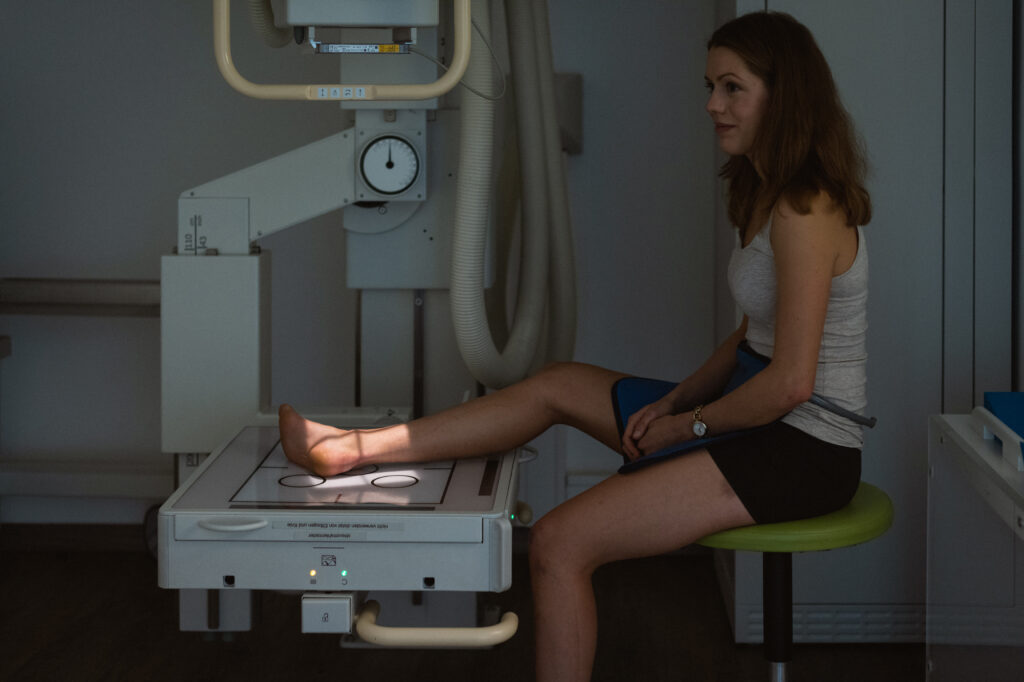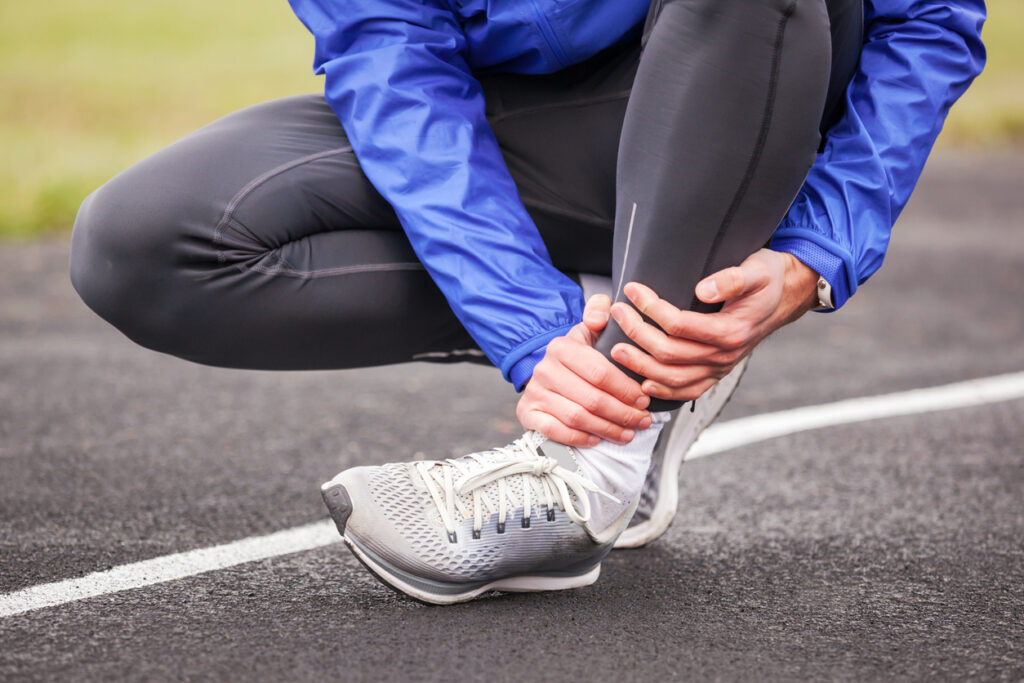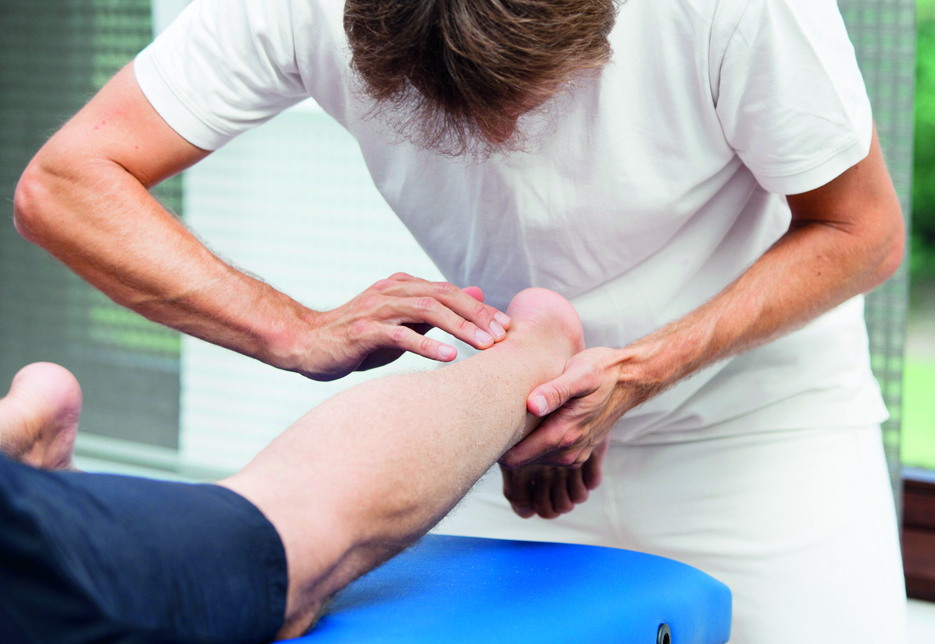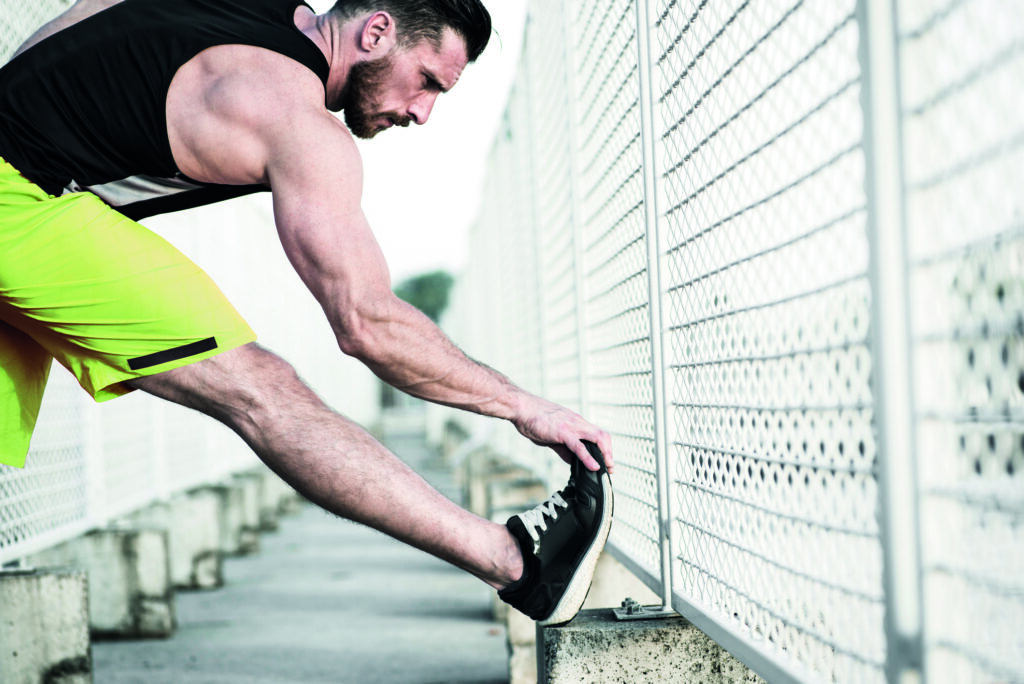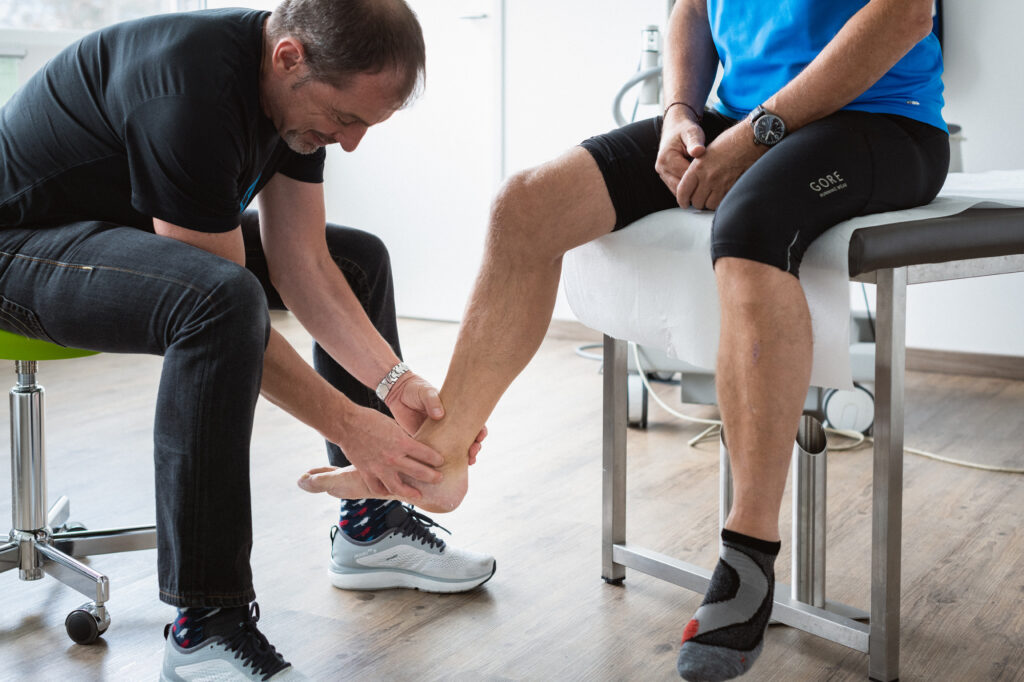Connection between the lower leg and foot
The foot is comprised out of 26 different bones which are connected in over 30 joints with each other. These have a central role while walking and running the forces which are distributed through the foot can reach up to 3 to 4 times body weight even during normal running.
In jumping these loads can come up to 10 fold body weight. The ankle joint is comprised of the following bones tibia fibula and talus. The subtalar joint is comprised of talus calcaneus navicular bone and cuboid bone.
Both these joints have strong ligaments on the inside, the outside and in the center to be stable and mobile at the same time.
Dynamic stabilization by tendons running across the joints plays a major role. If one of these elements is injured, the joint is in danger.
Range of treatments
- Ligament ruptures
- Impingement
- Arthrosis
- Fracture
- Achilles tendon
Special pathologies affecting the ankle joint
Achilles tendinopathy
Causes
The Achilles tendon transfers The power of the leg into the foot by connecting to triceps muscle in the calf with the heel bone. Strong tendons can transfer loads up to 600 kg. The acute injury (Achilles tendon rupture) is treated by operative treatment minimal invasive or open. This depends on the nature and the structure of the rupture as well as the acuteness of the injury. Functional treatment can follow this operative treatment, conservative treatment is reserved for special situations where increased risk for operative treatment is present. For chronic Achilles tendon pain, also called Achilles tendinopathy, conservative treatment is the main treatment. This comprises a number of physiotherapeutic treatments as well as self administered eccentric stretching exercises. In most situations the continuation of the sport with a reduced intensity and volume is possible. Inactivity is rarely needed and successful. It is important to make an exact diagnosis on the basis of an MRI to check the quality and the structure of the injured tendon. Shockwave therapy also plays a major role in the treatment of this condition. Injections with PRP is an option.
Typical symptoms
Sharp pain during and after exercise, tenderness along the tendon or at its insertion on the heel bone are characteristic. Often a swelling is also visible.
Therapy options
- Active strengthening Targeted strength training is an indispensable way to strengthen overstrained muscles and to prevent pain from reoccurring.
- Stretching Regularly stretching the affected muscles minimises tension and positively affects the healing process.
- Targeted massages Self-massage can eliminate muscle stiffness and improve blood circulation.
- Anti-inflammatory medication Either as an ointment, gel or spray on the skin, or taken in pill form, anti-inflammatory drugs contribute greatly to improving symptoms.
- Shockwave therapy Concentrated pressure waves promote local blood circulation, have a beneficial effect on inflammatory processes, and help to relax the muscles.
- Insoles Raising the heel reduces the tension in the affected tendon and thus leads to a reduction in symptoms.
- AlterG Running on an “anti-gravity treadmill” has a positive effect on healing.
- Injections For long-lasting pain, the injection of activated autologous blood (ACP) is often a consideration.
- Surgery During surgical procedures, open or arthroscopic, the patellar apex is rounded off. Dead tissue can be removed at the same time.
